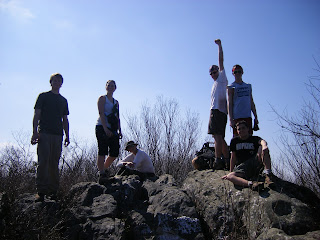
Goal: Improve health, fitness, and quality of life through daily physical activity.
The focus area for physical activity and fitness has 15 objectives related to participation in physical activities and access to physical activity and fitness programs and facilities at schools and worksites.
From looking at the Progress Quotient Chart, it shows that there was anywhere from a 6% to 28% range for moving towards the targeted change. Although unfortunately there was a decrease in moderate, vigorous and participation in physical activity altogether, which is what the goal was focused on.
Expansion...summary of progress, disparities, opportunities & challenges, and emerging issues
Physical inactivity is seen as an important public health problem that has evovled rapidly. The focus was mainly adults ranging from highschool age and up. It seems that some adolescents may perceive vigorous physical activity as socially unacceptable. Based on that same research, possible explanations for such a decrease is due to the diminishing school-based physical activity classes. Some initiatives being done was the "VERB, It's what you do" campaign. It was a national, multicultural, social marketing campaign coordinated by the Centers for Disease Control and Prevention.
The progress toward elminating disparities showed that the disaparities were similar over time. Although they found one exception was that the population with at least some college education background had the best rate of physical activity.
For most objectives in this focus area, the best group rates were observed in the white non-Hispanic population, persons with at least some college education, urban dwellers, males, and adults without disabilities.
Historically physical activity and fitness were integrated throughout ones daily life. It was a cultures way of life--maintaining the home, transportation, occupation etc. During the 20 century where there was a peak of automobiles and labor-saving devices--the lifestyle changed and physical inactivity was recognized as a risk factor for many chronic disease, poor mental health and overall health and wellbeing. The promotion fo public lands for public help are on the rise to ensure that Americans understand the benefits of being physically active. Federal agencies and national agencies (Heart, Lung, and Blood) are coming together to promote recreational facilities. There was a community based initiative developed, "Hearts N' Parks" developed and designed to inproving the nutrition and increasing physical activity. There are many emerging opportunties in the public health field along with many challenges. There is a lack of evidence based practices for physical activity programs targeting select populations. This challenge will continue for practitioners trying to affect physical activity behaviors within a target population.
Opprotunities have emerged with the coming of new years. There is now advance devices to measure physical activity (pedometers, heart rate monitors etc), to get a better idea of where a person is at physically. Also looking ahead to the future, public health practitioners increasingly view physical activity as a pillar of chronic disease prevention and mental health initiatives.
H.R.1585
Title: To amend the Elementary and Secondary Education Act of 1965 to improve standards for physical education.
Sponsor: Rep Kind, Ron [WI-3] (introduced 3/18/2009)
Latest Major Action: 3/18/2009 Referred to House committee. Status: Referred to the House Committee on Education and Labor.
Recommendation: Vote YES for H.R. 1585 To amend the Elementary and Secondary Education Act of 1965 to improve standards for physical education
My Political Representative(s): Congressman James L. Oberstar
 OH. MY. GOSH...blogging is over with for this class. Sad day..
OH. MY. GOSH...blogging is over with for this class. Sad day..










































